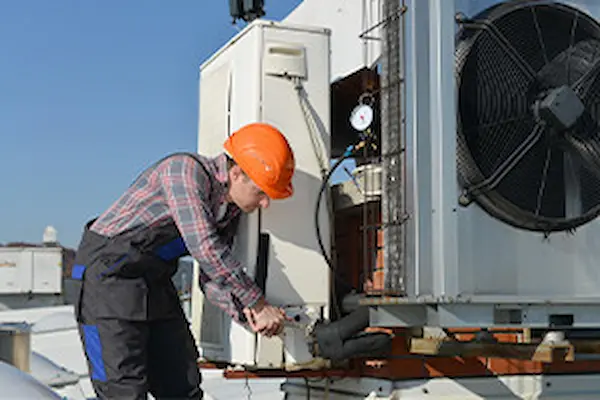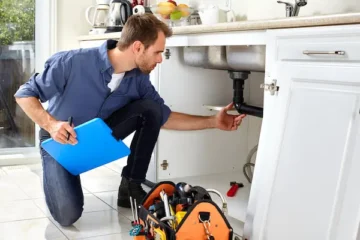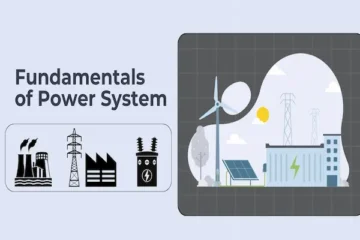Diploma in Refrigeration & Air Conditioning
Free online courses: fundamentals, real-life videos, diagnostics, safety, and certification pathways.
Anúncios
Complete Training Program for HVAC Technicians
Learning about refrigeration and air conditioning has never been more accessible thanks to free online courses available in 2025.
The HVAC industry needs skilled workers, and these free programs offer a way to start your career without spending money upfront.
You can learn the basics of heating, ventilation, air conditioning, and refrigeration systems through comprehensive online courses that cover everything from installation to maintenance.
These programs teach you about refrigeration cycles, psychrometry, and comfort systems.
Many courses also include real training videos and diagnostic techniques used by working technicians.
Free HVAC courses prepare you for entry-level positions and help you understand what certifications you need for your career goals.
You’ll discover the different job paths available and learn the core skills that employers want.
Whether you’re starting fresh or switching careers, these courses give you the foundation to succeed in this growing field.
Overview of Free Refrigeration and Air Conditioning Courses
Free refrigeration and air conditioning courses are available through multiple online platforms with flexible formats, basic enrollment requirements, and comprehensive certification options.
Course Formats and Availability
You can access free hvac training through several different formats. Online courses offer the most flexibility for your schedule.
Most platforms provide video lessons that you can watch at your own pace. These videos cover basic concepts like heat transfer and refrigeration cycles.
Self-paced learning allows you to complete modules when convenient. You don’t need to follow a strict timeline.
Some programs offer live virtual classes with instructors. These sessions let you ask questions in real time.
Course types include:
- Basic HVAC fundamentals
- Refrigeration system installation
- Air conditioning maintenance
- Safety procedures and environmental laws
Many free refrigeration and air conditioning courses provide certificates upon completion. These certificates can help boost your job prospects.
Top Online Training Platforms
Several platforms offer quality hvac courses at no cost. Alison provides comprehensive training on installation and maintenance of refrigeration systems.
Udemy hosts over 100,000 students in their HVAC programs. Their courses cover indoor environment control systems.
RSES offers both online learning and local chapter training. You can choose between digital courses or in-person sessions.
Platform features include:
- Video tutorials and presentations
- Technical reference materials
- Diagnostic training content
- Professional interviews
NPTEL focuses on refrigeration cycles and psychrometry processes.
Their courses target engineering students and professionals.
iKnow.com provides continuing education credits for HVAC professionals.
You can access their learning portal for advanced topics.
Enrollment Requirements
Most free hvac classes have minimal enrollment requirements.
You typically need a valid email address to create an account.
Basic requirements include:
- Internet connection for online access
- Computer or mobile device
- High school diploma (recommended but not always required)
No prior HVAC experience is needed for beginner courses.
Advanced courses may suggest some background knowledge.
You don’t need to pay upfront fees for most programs.
Some platforms may charge for premium certificates.
Age requirements vary by platform.
Most accept students who are 16 years or older.
Registration usually takes less than five minutes.
You can start learning immediately after signing up.

Fundamental Concepts in Refrigeration and Air Conditioning
Refrigeration and air conditioning work through cycles that move heat from one place to another. The main parts include compressors, condensers, and evaporators that work together using special fluids called refrigerants.
Refrigeration Cycle Principles
The refrigeration cycle moves heat from a cold space to a warm space.
This process uses four main steps that repeat over and over.
First, the refrigerant absorbs heat and turns from liquid to gas in the evaporator.
The compressor then squeezes this gas, making it hot and high-pressure.
Next, the hot gas moves to the condenser where it releases heat to the outside air.
As it cools down, the gas turns back into liquid.
Finally, the liquid refrigerant goes through an expansion valve. This drops the pressure and temperature, making it ready to absorb heat again.
Heat pumps work the same way but can reverse the cycle. In winter, they pull heat from outside air and bring it inside your home.
Basic System Components
Your refrigeration system has four key parts that work together. Each part has a specific job in moving heat around.
The compressor is like the heart of the system. It pumps refrigerant through the entire cycle and creates the pressure needed to move heat.
The condenser releases hot refrigerant gas to the outside. It has coils and fans that help remove heat from your home.
The evaporator does the opposite job. It absorbs heat from inside your house and cools the air that blows over it.
The expansion valve controls how much refrigerant flows into the evaporator. It also drops the pressure so the refrigerant can absorb heat properly.
Refrigerants are special fluids that change from liquid to gas easily. Common types include R-410A and R-134A, which are safer for the environment.
Understanding AC Systems
AC systems cool your home by removing heat and moisture from indoor air. They use the same refrigeration cycle but focus on comfort cooling.
Psychrometry measures how much moisture is in the air. Your AC system must control both temperature and humidity to keep you comfortable.
Split systems have parts both inside and outside your home. The outdoor unit contains the compressor and condenser, while the indoor unit has the evaporator.
Window units put all components in one box. They work well for single rooms but are not as efficient as split systems.
Central air systems cool your whole house through ducts. They connect to your heating system and use the same air distribution network.
Heat pumps can both heat and cool your home. They are very efficient because they move heat instead of creating it.
Key Certifications and Industry Requirements
Working in refrigeration and air conditioning requires specific certifications to handle refrigerants legally and demonstrate technical skills. EPA certification is mandatory for anyone working with refrigerants, while additional HVAC certifications can boost your career prospects.
Section 608 Certification Overview
Section 608 certification allows you to legally handle refrigerants in air conditioning and refrigeration systems. The EPA requires this certification for all technicians who work with ozone-depleting substances.
You can earn certification in four categories:
- Type I: Small appliances (less than 5 pounds of refrigerant)
- Type II: High-pressure appliances like air conditioners
- Type III: Low-pressure appliances like chillers
- Universal: All types combined
The test covers refrigerant recovery procedures, leak detection, and safety practices. You must pass with a score of 70% or higher.
Many online courses prepare you for this exam. The certification never expires once you earn it.
EPA Certification Preparation
EPA certification preparation courses teach you the rules for handling refrigerants safely. These courses cover the Clean Air Act requirements and proper recovery techniques.
Study materials include practice tests and technical manuals. Most preparation courses take 20-40 hours to complete.
Key topics you’ll study include:
- Refrigerant types and properties
- Recovery and recycling procedures
- Leak detection methods
- Record keeping requirements
You can take the EPA exam online or at testing centers. The exam fee typically costs $25-50.
HVAC Certification Options
HVAC certifications beyond EPA requirements can improve your job prospects. Industry organizations offer various credentials for technicians.
HVAC Excellence provides entry-level and professional certifications. Their tests cover electrical systems, heating, and cooling principles.
NATE certification (North American Technician Excellence) focuses on specific equipment types. You can earn credentials in heat pumps, gas heating, or air conditioning.
Many employers prefer certified technicians. Some states require additional licenses for HVAC work.
Free courses often include certification preparation as part of their curriculum. This helps you meet industry standards without extra costs.
Essential Skills for HVAC and Refrigeration Technicians
HVAC technicians need strong troubleshooting abilities to diagnose system problems quickly.
You must also understand comfort zones and air quality to keep buildings at the right temperature and humidity levels.
Troubleshooting Techniques
Systematic problem-solving is your most valuable tool in the HVAC industry.
Start by gathering information from customers about when problems began and what symptoms they notice.
Use your diagnostic equipment properly.
Digital multimeters help you check electrical connections. Pressure gauges show you if refrigerant levels are correct.
Follow a step-by-step approach every time:
- Check power supply first
- Test thermostat settings
- Inspect air filters
- Examine ductwork for leaks
- Measure refrigerant pressures
Listen to the equipment while it runs.
Strange noises often point to specific problems.
A grinding sound might mean bad bearings. Clicking sounds could indicate electrical issues.
Keep detailed records of what you find. This helps you spot patterns and makes future repairs easier.
Comfort Zones and Air Quality
Temperature control goes beyond just heating and cooling. You need to maintain comfort zones between 68-78°F for most buildings. Different spaces may need different settings.
Humidity levels matter just as much as temperature. Keep indoor humidity between 30-50% to prevent mold growth and maintain comfort.
Air circulation affects how comfortable people feel. Even if the temperature is right, poor airflow makes spaces feel stuffy or uneven.
Check these air quality factors regularly:
- Filter cleanliness
- Duct leakage
- Ventilation rates
- Carbon monoxide levels
Zoning systems let you control different areas separately. Learn how to balance airflow so each zone reaches its target temperature without wasting energy.
Maintenance Procedures
Preventive maintenance keeps systems running longer and prevents costly breakdowns. Create schedules for regular inspections and part replacements.
Filter replacement is your most frequent task. Check filters monthly and replace them when dirty. Clogged filters reduce efficiency and damage equipment.
Refrigerant handling requires special care and certification. Check for leaks during every service call. Follow EPA rules when adding or removing refrigerant.
Cleaning procedures include:
- Coil cleaning with approved chemicals
- Drain pan maintenance
- Belt inspection and adjustment
- Lubrication of moving parts
Safety checks protect both you and building occupants. Test safety switches, check gas connections for leaks, and verify proper ventilation. Document all maintenance work for warranty and compliance purposes.
Exploring Career Paths in HVAC and Refrigeration
The HVAC industry offers strong job growth with a median salary of $57,300, while continued learning helps you advance from entry-level technician roles to specialized positions.
HVAC Industry Opportunities
You can choose from many career paths in the HVAC industry. Most graduates become HVAC technicians or refrigeration technicians.
The field is growing fast with new jobs opening regularly. You can work on different types of systems like:
- AC split systems
- Mini-split systems
- Heat pumps
- Furnaces
- Refrigeration units
Entry-level positions include HVAC helper and apprentice roles. These jobs let you learn on the job while earning money.
Mid-level careers include service technician and installation specialist. You handle repairs and install new systems for customers.
Advanced positions include supervisor, project manager, and business owner roles. These jobs require more experience but pay higher salaries.
You can also specialize in areas like commercial refrigeration or industrial systems. Each specialty has its own training requirements and pay scale.
Continuing Education Options
Free online courses help you build skills even after you start working. Many programs offer certificates you can add to your resume.
Online training platforms cover HVAC basics, electrical systems, and refrigeration cycles. You learn at your own pace from home.
Competency-based programs use quizzes and exams to test your knowledge. You must pass each section before moving forward.
Key study areas include:
- Electrical systems
- Refrigeration technology
- Boiler and chiller systems
- Troubleshooting methods
Progressive learning helps you advance your career step by step. You can move between different HVAC occupations as you gain new skills.
Many employers value workers who keep learning new techniques and technologies.





